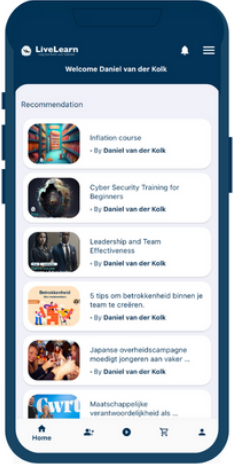
Artikel
04
October
Cultural Norms and Conflict Management
The first draft of the Thomas-Kilmann Conflict Mode Instrument (TKI) was created in early 1971 at the University of California, Los Angeles. In UCLA’s Graduate School of Management, Ken Thomas was a young assistant professor, and I was an even younger doctoral student. After several rounds of data collection—which allowed us to fine-tune the instructions, the 30 items, and the accompanying interpretive materials—the TKI instrument was ready for publication. For the next five decades, I continued using it in my research, teaching, and consulting projects, allowing me to learn more about conflict management.
All you need to know to start is that the TKI assessment measures the relative frequency with which you use five modes of behavior—competing, collaborating, compromising, avoiding, and accommodating—in a conflict situation. After taking the assessment, you become aware that you’ve been using one or more modes too much and one or more modes too little. By learning how to choose the right mode for a given situation purposely, more of your needs and other people’s needs can be met.
Cultural Norms and Conflict Modes
The culture of a family, community, or organization partially determines whether the use of a given conflict mode—mainly collaborating—will be successful. Here’s how the actual norms can first be identified and then be changed into desired norms so that all conflict modes can be used effectively.
In the case of a workgroup (though the same could be applied to a family or community), members are introduced to the concept of cultural norms—the unwritten, unspoken rules of the road: how to get by or survive, or simply “how things are done around here.”
Several examples are given: “Don’t disagree with the boss, regardless of whether they ask for input; don’t share information with other groups; don’t rock the boat; don’t make waves; don’t try anything new; and don’t trust anyone who seems sincere.” With these examples, most people have little difficulty coming up with a list of the cultural norms flourishing in their work group or organization—which constitute the actual norms.
By the way, it usually helps to have discussions in peer groups without the immediate boss present; otherwise, the actual norms might prevent members from voicing their true opinions.
The workgroup is then asked to generate a list of the desired norms that would promote satisfaction, high performance, and the capacity to address all important conflicts out in the open (with the collaborating mode, for example). Usually, the members develop a list of desired norms that are 180 degrees different from their prior list: “Take the chance to state your true opinions in public; trust that others have good intentions; even if you were badly hurt or disappointed before, try new and better ways of doing things; be willing to learn new ways of interacting with others; and, since we are all on the same team, let’s work together by sharing all that we know about a problem or conflict.”
The difference between actual and desired norms is a culture gap. The focus then shifts to how to close all the identified gaps using problem management steps—sensing problems, defining problems, deriving solutions, implementing solutions, and evaluating outcomes.
Essentially, once the members have sensed a significant problem—a gap between what is and what could or should be that breaks a threshold of acceptability—they then proceed to determine the root cause of the gap, often the fear of being hurt, disappointed, ridiculed, or devalued again.
Next, solutions are suggested that would close the gap, which is ironically greatly facilitated by an open discussion about culture gaps. Then, one or more solutions are implemented—for example, developing an informal reward system whereby people remind one another of the desired norms whenever the actual norms have crept back into the workplace.
Finally, in a few weeks, the members evaluate whether they have succeeded in closing their largest culture gaps, again by developing lists of actual and desired norms and noting any remaining gaps. The cycle of problem management continues.
Unless a family, community, or workgroup consciously—and deliberately—identifies and closes its culture gaps, cultural norms tend to stay negative, if only because people are naturally compelled to protect themselves from further harm, whether feared or imagined or projected from past experiences. But suppose the culture is managed explicitly, as suggested above. In that case, the trust, candor, openness, and willingness to change, which are the key attributes needed to support the collaborating mode, will enable members to satisfy their most important needs fully and wants.
Bottom Line: Do Your Cultural Norms Encourage True Expression?
Do the cultural norms in your group, department, or organization encourage members to express their true needs and concerns?
We ask this enlightening question to discuss the key attributes of a conflict situation that concern all those surrounding systems in an organization that affect how conflicts are managed: cultural norms, strategies, structures, job descriptions, reward systems, policies, and procedures.
So often, the surrounding culture compels members to avoid by expecting them to follow this silent cultural norm: “Keep your opinions to yourself, so you stay safe and secure in this organization.”
Essentially, regardless of what your personal preferences are with respect to using one conflict mode or another (competing, collaborating, compromising, avoiding, and accommodating), the usually implicit—but highly influential—cultural norms may have something else to say about what conflict mode is safe to use in your organization. Never ignore the potential impact of the reward system on how conflicts are being addressed in your group or department. You may get seriously penalized when it’s time for your annual performance appraisal if you’ve openly confronted other members, let alone your boss or other managers, about the topics that nobody wants to discuss. If you stir up trouble and bad feelings as other members or managers experience your ongoing efforts to discuss certain sensitive conflicts openly, you might later be the recipient of a negative performance appraisal. In most organizations, it’s quite evident which members receive bonuses, raises, and promotions and whether those fortunate persons have “played it safe” or, instead, have openly expressed their opinions on one conflict or another.
As members notice the relationship between “playing it safe” and later getting rewarded for such protective behavior, the reward system becomes a key attribute that may limit the use of the more assertive conflict modes, such as competing, collaborating, and compromising.
What's your reaction ?
Follow us on Social Media
Some Categories
Recent posts

December 15, 2025
Hoogste Europese rechter bevestigt minimumloonrichtlijn EU-landen

December 09, 2025
Non-bancaire financiering: zó regel je dat

December 05, 2025
Deadline kleineondernemersregeling (KOR) 2026 nadert

December 01, 2025
Inzicht in je cijfers: zo haal je meer winst uit dezelfde omzet

November 27, 2025
Productiviteit stagneert: hoe zorg je voor verandering op de werkvloer?

 Inloggen
Inloggen
 Registreren
Registreren






Comments (0)
No reviews found
Add Comment